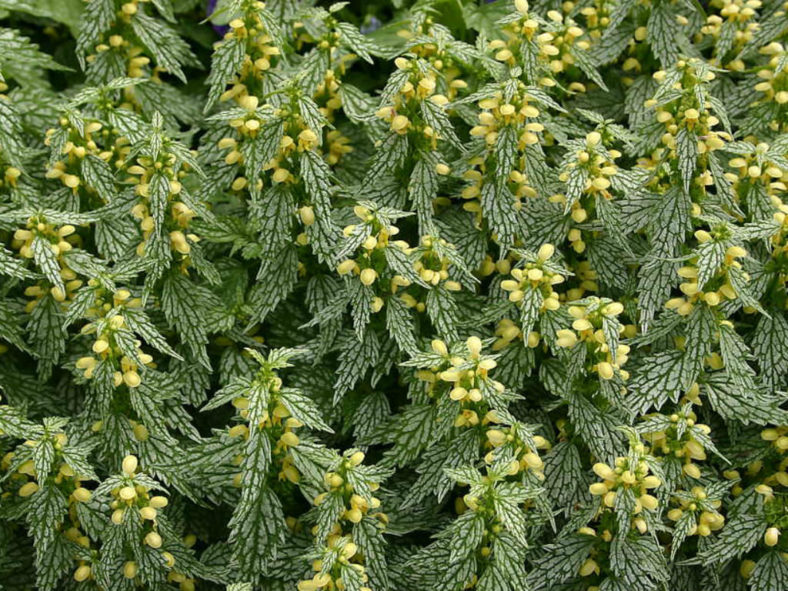Lamium (Dead Nettle) is a trailing, groundcover perennial. The name "Dead Nettle" refers to the fact that Lamium does not have the stinging hair characteristic of other nettles. Native to Europe and western Asia, Lamium is frequently found naturalized along woodland trails and paths and colonized along the banks of streams.
Its variegated leaves and colorful spring flowers make Lamium a reliable choice for brightening shady garden spots where few other perennials will grow.
Growing Conditions
Lamium is undemanding and easy to grow in partial to fully shaded locations. It prefers well-drained soil but will do fine in the dry shade if you provide it with regular watering.
A member of the mint family, Lamium spreads quickly, is self-seeding, and will rapidly create a ground cover wherever it is planted. Its brittle, fragile stems help keep it from becoming aggressively invasive and also allow bulbs and other perennials to penetrate its foliage.

General Care
In regions with cold winters, Lamium is deciduous. In milder climates, it is semi-evergreen. In either case, cut back shabby foliage after the first frost to make way for new growth in the spring.
In midsummer, after the blooming period is over, prune plants back by one-third to help prevent them from becoming too invasive. The midsummer shearing also encourages a second flowering period in September.
Not picky, spotted Dead Nettles do just fine in average, well-drained soil. There is no need to apply fertilizer, encouraging them to become too robust and invasive.
Pests and Diseases
Lamium is rarely troubled by disease and is generally pest-free. However, slugs and snails may be occasional visitors.
Check your plants regularly and if slugs or snails are present, handpick and dispose of them as they appear. Early mornings and evenings and after periods of damp weather are the best times to hunt for these pests. Another method of control some gardeners use is placing saucers of stale beer among their plants, with the lip of the container at ground level. Slugs and snails are attracted to the liquid, fall in and drown.
Source: gardenguides.com
Links
- Back to genus Lamium
- Plantpedia: Browse flowering plants by Scientific Name, Common Name, Genus, Family, USDA Hardiness Zone, or Origin

